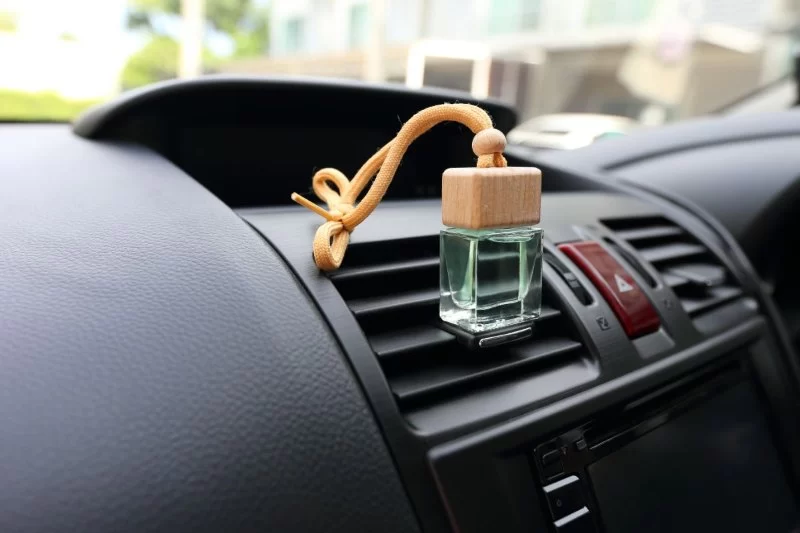- why-your-car-needs-the-right-air-freshener - Why Choosing the Right Car Air Freshener Matters
- understanding-different-car-air-freshener-types - Understanding the Different Types of Car Air Fresheners
- matching-scent-to-your-vehicle-and-lifestyle - Matching the Scent to Your Vehicle’s Interior and Your Lifestyle
- considering-materials-and-interior-surfaces - Considering Materials and Interior Surface Compatibility
- real-world-experiences-and-common-pitfalls - Real-World Experiences and Common Mistakes to Avoid
- long-lasting-vs-temporary-solutions - Choosing Between Long-Lasting vs. Temporary Scent Solutions
- where-to-find-your-perfect-car-freshener - Where to Find Your Perfect Car Air Freshener
1. Why Choosing the Right Car Air Freshener Matters
Your car is more than a way to get from point A to point B—it’s often a mobile office, coffee stop, pet carrier, or post-gym sanctuary. That’s why choosing the right car air freshener for your vehicle’s interior isn’t just about scent—it’s about comfort, personality, and even safety.
A poorly chosen air freshener can overwhelm passengers, clash with your car’s materials, or fade in a few days. The right one subtly enhances your ride, complements your interior, and lasts through your busiest weeks—whether you drive a luxury SUV or a well-loved commuter sedan.
2. Understanding the Different Types of Car Air Fresheners
There’s more to car fresheners than those little pine trees hanging from mirrors. Understanding the different types helps you pick what works best for your space:
Vent clips: Ideal for even scent diffusion through your car’s airflow. Great for small to mid-sized vehicles.
Hanging cards: Lightweight and budget-friendly, but often short-lived.
Gel canisters: Sit in cup holders or under seats, offering slow-release scent over weeks.
Charcoal bags: Fragrance-free odor absorbers for those who prefer clean, neutral air.
Essential oil diffusers: Stylish and customizable; often powered by USB or solar for consistent dispersion.
Each has its pros and cons depending on your sensitivity, space, and travel habits.
3. Matching the Scent to Your Vehicle’s Interior and Your Lifestyle
Just like you wouldn’t wear beach cologne to a formal dinner, your car’s scent should match its purpose and vibe. A leather-trimmed Tesla might pair best with subtle notes like cedar or white tea, while a family minivan may benefit from odor-fighting citrus or green tea scents that handle spilled snacks and sports gear.
Frequent gym-goer? Go for something fresh and cooling like eucalyptus or peppermint. Rideshare driver? Consider neutral or soft fragrances that won’t polarize passengers. Parents with kids? Avoid overpowering scents and stick to light florals or vanilla blends that keep things mellow.
4. Considering Materials and Interior Surface Compatibility
It’s not just about what smells good—it’s about what works with your car’s interior. Some air fresheners, especially vent clips or oil-based diffusers, can cause residue build-up or discoloration on plastic or leather trim. That’s why it’s crucial to place them thoughtfully and avoid options that leak or melt in heat.
Look for formulas labeled as “no-spill” or “car-safe,” and test any scented products away from high-visibility surfaces. If you live in a hot climate, choose heat-resistant products designed for car interiors to avoid summer scent disasters.
5. Real-World Experiences and Common Mistakes to Avoid
One driver shared on Reddit how a strong strawberry gel melted onto her dashboard and left a permanent stain—an expensive mistake from a $5 purchase. Another rideshare driver in Miami shared that switching from synthetic sprays to a lavender essential oil diffuser led to higher tips and compliments from passengers.
A common mistake? Over-layering. Using two or more competing scents in a small space can overwhelm even the most tolerant noses. Always start with one fragrance and see how it performs over a few days before adding anything else.
6. Choosing Between Long-Lasting vs. Temporary Scent Solutions
If you use your car regularly or go on long commutes, long-lasting fresheners like charcoal bags or gel pods (30–90 days) might offer better value and less maintenance. But for occasional drivers or seasonal refreshes, a quick-spray or hanging option might be just right.
Pro tip: keep a travel-sized spray tucked in the glove compartment for emergency refreshes—especially after carpool duty, pet trips, or late-night drive-thrus.
7. Where to Find Your Perfect Car Air Freshener
With so many choices, the best place to begin is a trusted source that understands scent quality and car safety. Scent Snob offers handpicked car air fresheners based on scent quality, duration, ingredient safety, and customer feedback. Whether you’re looking for something minimalist, bold, pet-safe, or travel-friendly, their recommendations can help you match your ride with the right scent—without the trial-and-error.
Because in the end, the right air freshener isn’t just about masking odors—it’s about turning your vehicle into a place that feels like you.


0 comments